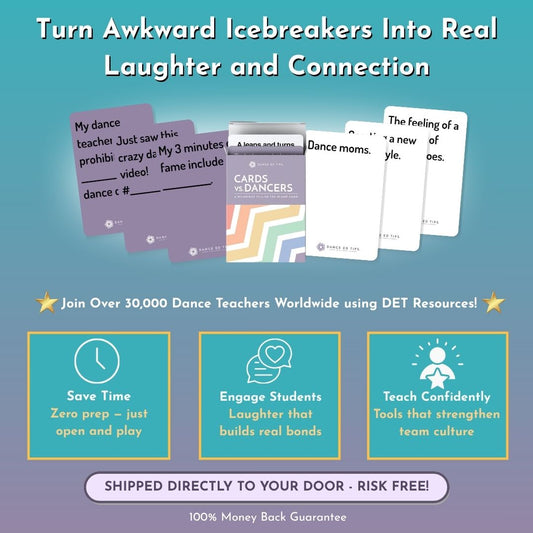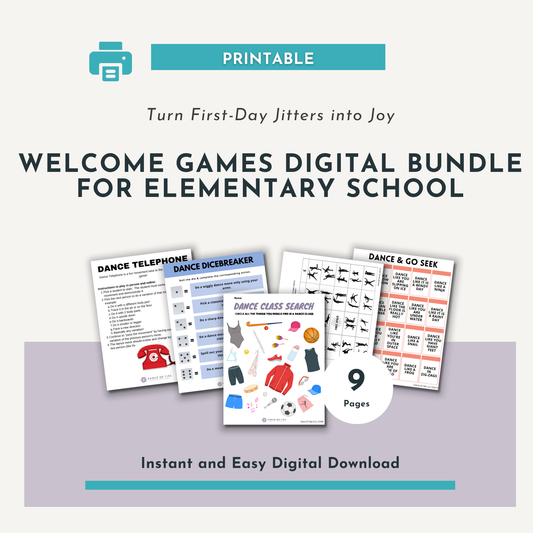By: Lindsey Della Serra
Remote learning during a pandemic can make building relationships during class a challenge. Find outs our advice on how to fix that problem
I do not know about you, but before remote learning began my dance classroom was a social mecca! Everyone somehow made an appearance or stayed in the dance studio longer than they should. The music, the open studio space, the energy all attracted dance students, non-dance students, and adults. As dance educators, we all know dance is a social artform and we thrive on relationships and collaboration. Many colleagues have told me that the physical energy of training, creating and even performing in a studio/theater cannot be replicated virtually.
Dance is also a very emotional discipline. We laugh, cry, celebrate, grieve, challenge, and indulge through movement. Whether a student is outspoken or not, asking them to physically do a movement reveals energy and feelings to the audience member. It also causes the student to personally feel something that they may not have been aware of. Dance students tend to spend lots of time together training, rehearsing, creating, and performing. Because of this, a strong bond is often formed and emotions are shared with one another.
Remote learning has reduced our time together, canceled our performances, required us to social distance, and caused us to individually manage our emotions. A dancer’s household varies with the number of family members and access to technology. How can we virtually maintain a similar level of social and emotional development that we had while physically together?

Technology is allowing us all to stay connected whether that be phone calls, texts, video chats, or social media posts however physically being around other people’s energy is lacking. I have found that the following five things help compensate for the loss of social and emotional developmental amongst students:
- Set clear online procedures and consistent video meetings: Seeing each other on a daily basis while physically in school provides students with consistency and stability. Classroom procedure are automatically followed and a routine is maintained. By physically being in the same space, there is an accessibility to one another for opportunities to communicate. By establishing clear online procedures and consistently scheduling video meetings, autonomy and stability similar to that of the physical classroom are created. Keep things simple and clear so the student can navigate your online classroom with ease. Be consistent in your communication and do not change things often.
- Sharing a common goal or project: Before remote learning, we were working on a group dance which creates a common goal that everyone is working towards. This can be established virtually whether that be through the planning of a virtual concert or other collaborative projects. Google applications allow for multiple people to edit a document. A research assignment can be assigned where individual tasks are given but then everyone is required to share and collaborate as a group. Maybe a charitable cause is established through your school or studio and there is a fundraising goal that everyone is working together on. This unites the students similar to a group choreography process.
- Maintain a line of open communication: While maintaining instruction, I feel that it is extremely important to continue to have an open line communication. All of the opportunities before, between and after class when students would speak to me are lost. Virtually, I make it known to my students how accessible I am and that I am here to support them along with their guidance counselors and administrators. Each student’s household requires a different kind of support. Having open/optional office hours for students to have the opportunity to stop in to ask questions or say something they’d like to share is important. I also have students schedule one-on-one phone meetings or they can email me directly. I make sure to respond to all students within 24 hours. This immediate and open line of communication helps compensate for those lost moments of interaction.
- Promote exercises of self-reflection and journaling: I include a lot of self-reflection and journaling in my remote learning assignments. I believe dance education allows students to develop a heightened relationship with their body, mind and soul. Through dance, we are always learning about our physical selves, mental/emotional selves and spiritual selves. Majority of us are not physically moving as full out as we can in the studio which is impeding upon our personal development. By requiring students to maintain a daily journal, do self-reflection exercises and continuing to “check in” with themselves can help. Some students may be working and taking care of their household because of sick family members. Stress, anxiety and depression can be increased during this time. By sharing the support services your school has to offer and encouraging students to self-reflect can help manage these emotions.
- Feedback, feedback, feedback: Remote learning has allowed me to give a great deal of individual feedback. This is something that I never had the time for while physically in school. It has been wonderful to see the quieter students communicating more through remote learning. Peer feedback can also be virtually maintained so students stay connected to their classmates. Liz Lerman’s Critical Response Process can be easily done with video critique or video conferencing. This process is an equitable way for all parties to share, ask and respond to one another. https://lizlerman.com/critical-response-process/
One of my favorite parts of being a dance educator is the relationships I get to build with students. Although I am grateful technology allows us to stay connected, I cannot help but still feel the loss of physical energy shared in a dance studio/theater. By setting clear online procedures and consistent video meetings, sharing a common goal, maintaining a line of open communication, promoting exercises of self-reflection and journaling, and giving lots of feedback, I am able to continue the social and emotional development of my students. It is from my experience that optimal learning happens once this foundation is laid.

Lindsey Della Serra Ed.M., BFA, PMA-CPT graduated cum laude from Mason Gross School of the Arts with a Bachelor of Fine Arts in Dance and a Master’s in Dance Education from Rutgers Graduate School of Education. Born and raised in Cranford, NJ, Lindsey has been dancing since the age of 3 years old. Lindsey is a Polestar Pilates trainer and received her PMA-CPT in 2014 through the Mason Gross Extension Division. Lindsey teaches various genres of dance and Pilates at multiple studios and camps in NJ to both children and adults. Lindsey was the former Education Outreach Coordinator for 10 Hairy Legs, an all-male dance company under the artistic direction of Randy James. Currently, Lindsey is a full time dance educator at Franklin High School in Somerset, NJ, Company Manager for Moving Youth Dance Company in Cranford, NJ, and Project Manager for Dance Ed Tips.





